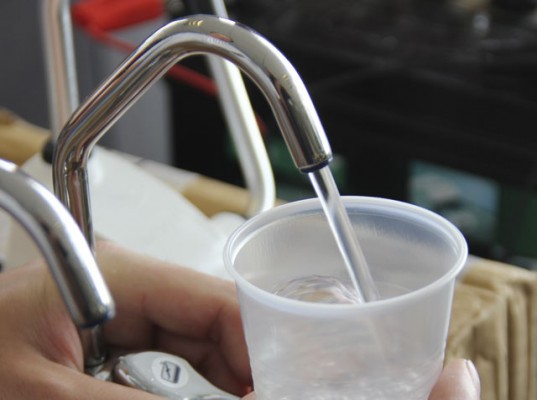Potable water is a valuable resource on a boat – but how do you keep tank water fresh? Ben Meakins and the PBO team test water treatments and filters to find out
The ‘tank taste’ you get from a boat’s fresh water tank can be pretty unpalatable, especially if you’re feeling seasick. Mostly this taste is disguised when used for cooking, but it makes your plain drinking water unpleasant and can produce a thick scum on top of your tea – not to mention making said tea taste terrible.
To overcome the drinking water problem many sailors drink only bottled mineral water and use the boat’s tank water just for cooking. But the plastic bottles take up a lot of space, they’re not exactly environmentally-friendly and it’s a shame not to be able to use tank water for its intended purpose.
But how do you keep tank water tasting fresh? We tested seven methods of making your drinking water more palatable, ranging in price from 54p to £355. These could be divided into the
following groups:
- Activated carbon filters
These work by passing the water through a carbon filter to remove the taste and smell. It won’t remove bacteria from the water, even though some filters have silver to inhibit the growth of bacteria in the filter. On first use, they must be flushed to remove black carbon particles. - Sub-micron filters
If you want to remove bacteria and other nasty stuff from the water, you’ll need a sub-micron filter. These can remove impurities down to 0.1 micron. Some of the filters on test have additional filters which use surface absorption and a polarised casing to remove chemicals and heavy metals. Many of these filters require a significantly higher pressure to work. Some solely sub-micron filters won’t do anything about taste and smell, however – you’ll need a charcoal filter for that, too. - Additives
We tried a couple of proprietary tank treatments, Aqua Clean, a chlorine-based product, and Aqua Sol. These can be added to the tank water to sterilise it, and are recommended for sterilising and flushing out a tank. They might make the water safe to drink,
but they do often result in an unpleasant taste. Following a tip on the PBO forum we also tried using lemon juice as a water treatment.
How we tested them
We needed water with a suitably unpleasant taste and odour, so took a sample from a flexible fresh water tank on a small yacht and then passed some through each filter after following the manufacturer’s instructions to flush and prime each unit.
We used a sample of each water to make a cup of tea, each brewed for 10 seconds, before adding 10ml of milk by syringe. We then conducted a blind taste test, with testers scoring each sample for flavour, aftertaste and odour.
Control Samples
Plain tap water
WATER *** TEA ****
Straight from the tap at the PBO office in Poole, Dorset, this got a surprisingly low score in our blind taste test for the water, with a slight chlorine aftertaste, but was otherwise perfectly drinkable. For the tea it scored well.
Plain tank water
Untreated tank water
WATER * TEA *
Unsurprisingly this got the lowest score of all. It had a stale flavour, a plasticky odour and a lingering aftertaste that one tester described as ‘old socks’ that got worse with time. Tea made with this water had the most scum on top and a plasticky taste, with a hint of the chlorine (Milton) used to sterilise the tank in the winter.
Water treatments tested
You can read the individual reviews of each of the following products by clicking on the title. For our conclusions, scroll down….
Water filters tested
PBO Verdict
The tank water was unpleasant to drink – and adding any of the treatments to it served only to alter the taste rather than improve it. All of the filters tested improved the flavour and aftertaste, however.
The Seagull IV and Nature Pure QC filters gave by far the best taste improvement, and also remove bacteria and other substances, making even contaminated water safe to drink.
The charcoal filters all made the water more palatable, with the Jabsco Aqua Filta coming out best of these in our tests. You will need to ensure the water is safe to drink, ideally with the addition of a treatment before it is filtered. We found that the filters removed the taste of chlorine when Aqua Sol was added in a mild dose and this combination of a subtle water treatment to kill bacteria and a charcoal filter to remove any bad taste would seem to be the way forward if you want safe drinking water on a budget.
The Nature Pure system, while not cheap, does all this while delivering a taste close to that of mineral water.





